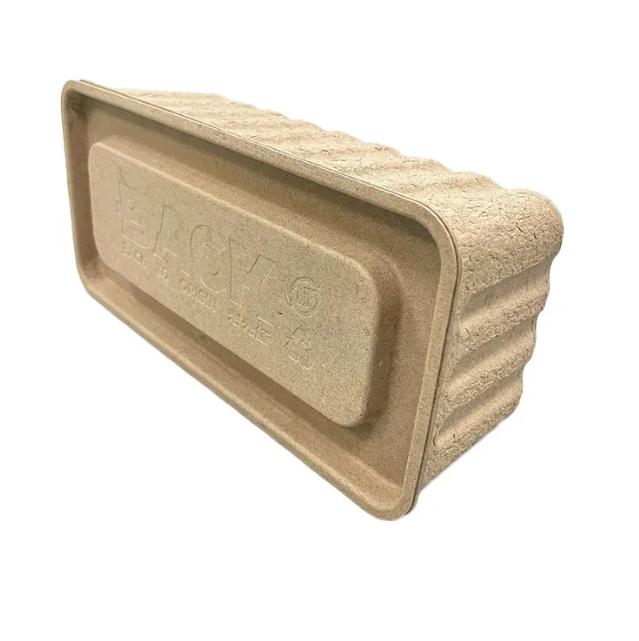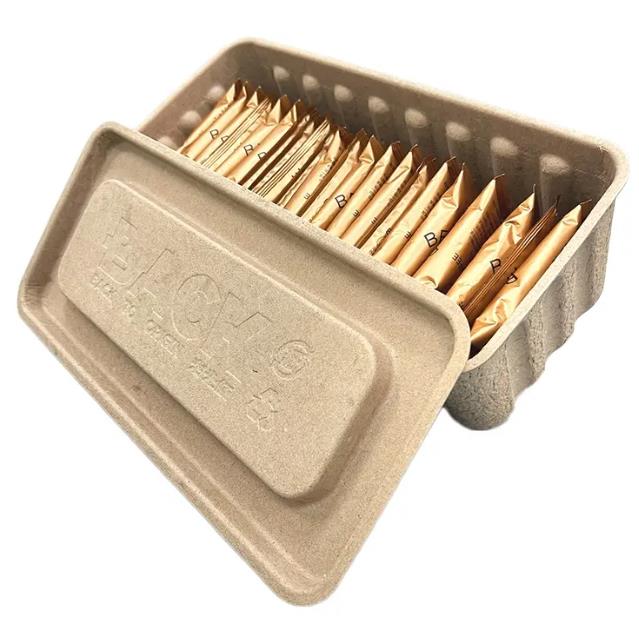In the realm of sustainable packaging, the choice between wet press and dry press molded pulp plays a pivotal role in determining the environmental impact and effectiveness of the final product. Both methods are employed by dedicated molded pulp factories, each with its unique characteristics and applications. This article delves into the intricacies of wet press and dry press molded pulp, shedding light on their manufacturing processes, environmental considerations, and applications in the pursuit of sustainable packaging solutions.

Understanding Wet Press Molded Pulp:
Wet press molded pulp is a production method that involves the use of a slurry of water and recycled paper fibers. In this process, a mold is submerged into the slurry, allowing the fibers to adhere and form the desired shape. Excess water is then drained, and the molded pulp is dried to achieve the final product. Wet press molded pulp is known for its intricate designs and smooth surface finish.
Exploring Dry Press Molded Pulp:
On the other hand, dry press molded pulp utilizes a different approach. The process involves pressing the paper fibers into the desired shape without the use of water. The fibers are first mixed with binders and then pressed into molds under high pressure. This method often results in products with a more rigid structure, making it suitable for applications that require durability.

Environmental Considerations:
One of the primary advantages of both wet press and dry press molded pulp is their inherent eco-friendliness. These processes rely on recycled paper as the primary raw material, contributing to the reduction of waste and the conservation of natural resources. Additionally, the absence of harmful chemicals in the manufacturing process aligns with the principles of sustainable packaging.
Applications in Sustainable Packaging:
Wet Press Molded Pulp Factory:
The wet press molded pulp process is well-suited for products that require intricate designs and a smooth finish. It is often employed in the production of packaging for delicate items such as electronics, glassware, and cosmetics. The flexibility of the wet press method allows for the creation of custom designs, catering to the specific needs of diverse industries.
Dry Press Molded Pulp Factory:
Dry press molded pulp, with its more rigid structure, finds applications in products that demand durability. It is commonly used for packaging items like fruits, eggs, and other perishables. The sturdiness of dry press molded pulp makes it an ideal choice for products that need extra protection during transportation and handling.

Comparative Analysis:
Production Efficiency:
Wet Press: Known for intricate designs but may have longer drying times.
Dry Press: Faster production due to the absence of water, resulting in quicker turnaround times.
Product Characteristics:
Wet Press: Smooth surface finish, suitable for delicate items.
Dry Press: Rigid structure, ideal for products that require durability.
Environmental Impact:
Wet Press: Uses water in the manufacturing process, may require energy-intensive drying.
Dry Press: Water-free process, potentially more energy-efficient.
Choosing the Right Method for Sustainable Packaging:
Selecting between wet press and dry press molded pulp depends on specific packaging requirements. A wet press molded pulp factory may be the preferred choice for products that prioritize design intricacy, while a dry press molded pulp factory is suitable for items demanding structural robustness.
Conclusion:
Wet press and dry press molded pulp represent two distinct yet sustainable approaches to packaging production. Whether opting for the versatility of a wet press molded pulp factory or the durability offered by a dry press molded pulp factory, businesses can contribute to eco-conscious packaging while meeting the unique demands of their products. As the pursuit of sustainability continues to shape the packaging industry, the choice between wet press and dry press molded pulp remains a critical decision for businesses committed to reducing their environmental footprint.

